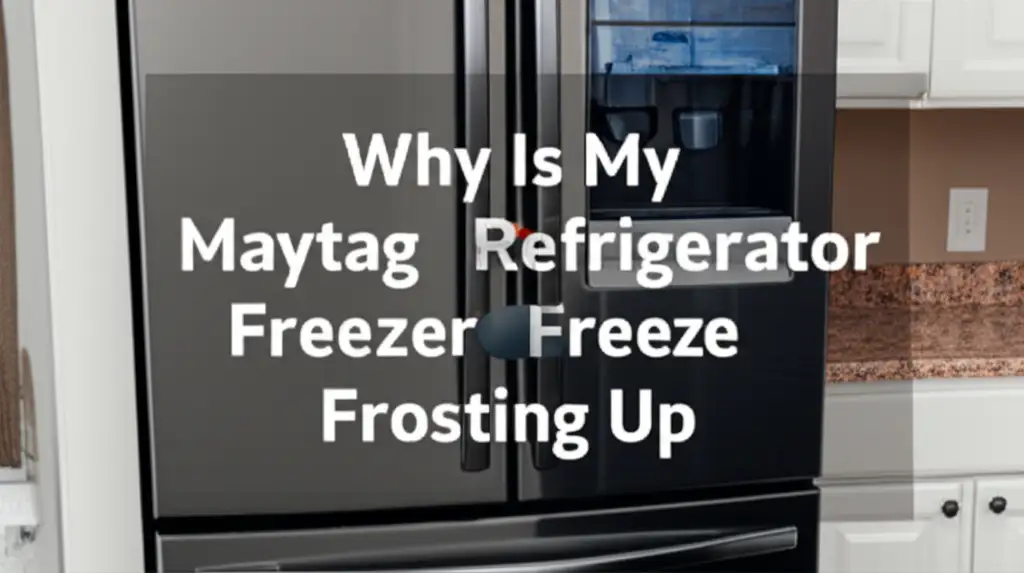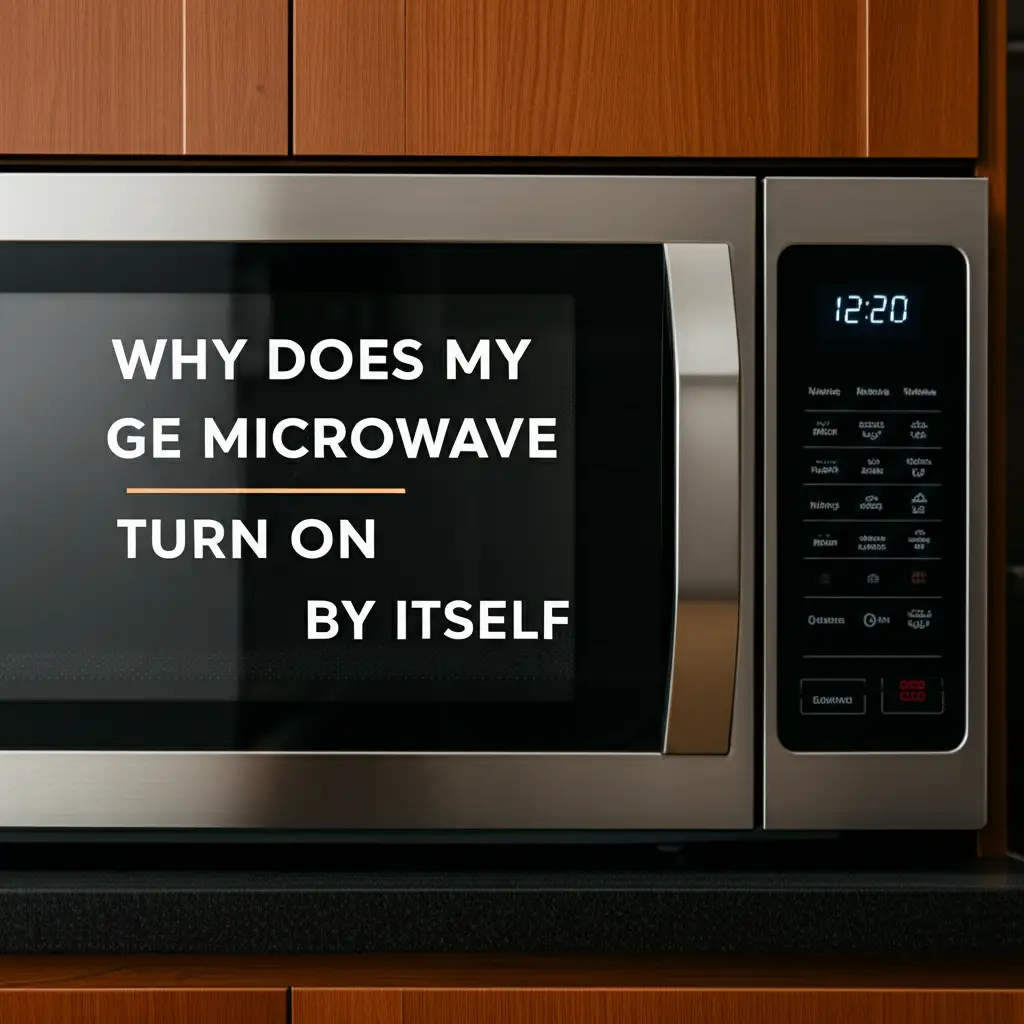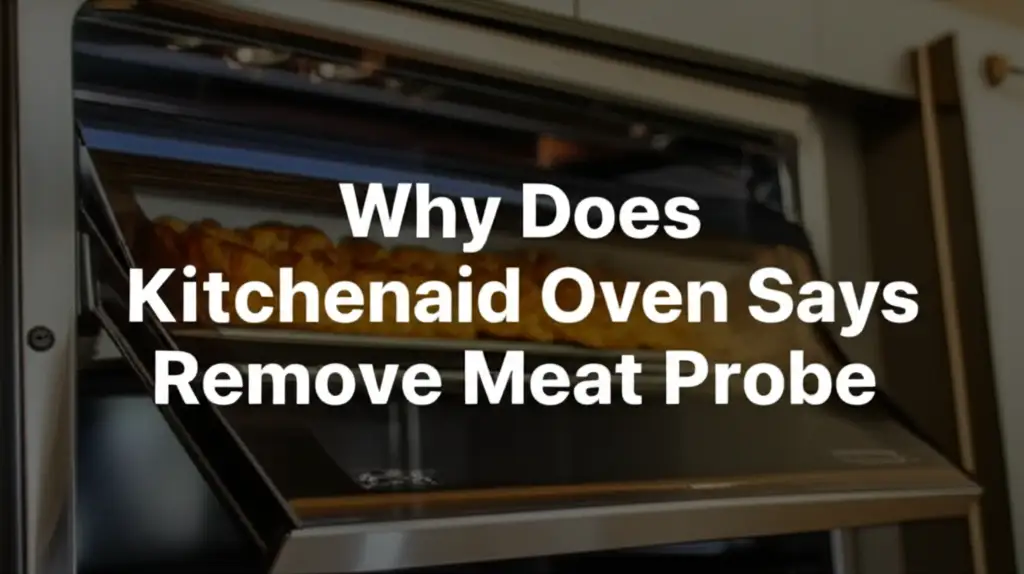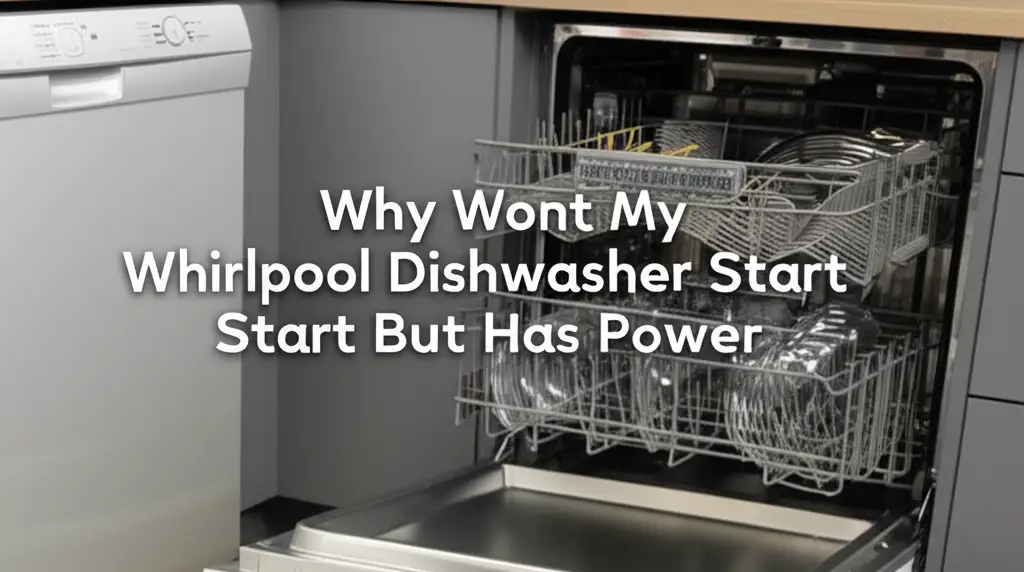· Davia Murnell · Appliance Troubleshooting · 13 min read
Why Does My Beko Washing Machine Keep Tripping The Electric
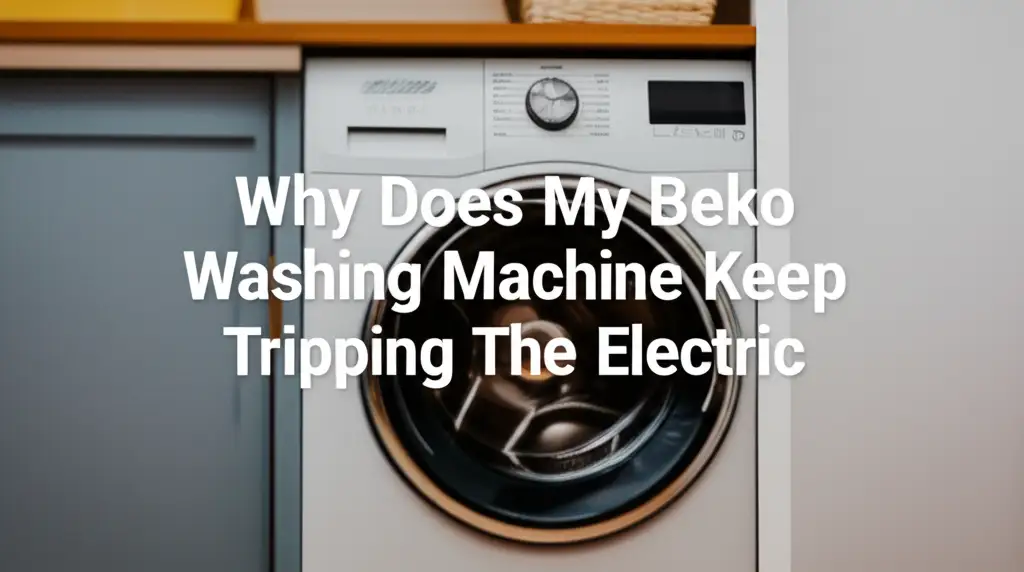
Beko Washing Machine Tripping The Electric: What to Do
Having your washing machine suddenly shut down in the middle of a cycle is frustrating. It gets even worse when it trips your home’s electricity. A Beko washing machine that keeps tripping the electric is not just an annoyance; it signals a potential electrical fault. This issue needs your attention. It could be a simple fix or a serious electrical danger.
I understand how vital a working washing machine is for daily life. When your Beko washing machine keeps tripping the electric, it brings laundry to a halt. This article explores the common reasons your appliance might cause an electrical trip. We will look at typical faulty parts and offer practical troubleshooting steps. You will learn when you can fix the problem yourself and when to call a professional. Stay with me to get your laundry routine back on track.
Takeaway
- Safety First: Always unplug the machine before any inspection.
- Common Culprits: Heating elements and motor faults are frequent causes.
- Water Damage: Leaks can cause dangerous electrical shorts.
- Professional Help: Call an electrician or appliance technician for complex electrical issues.
- Preventative Care: Regular cleaning and proper use help avoid trips.
When your Beko washing machine keeps tripping the electric, it points to an electrical fault. This is often a component short-circuiting or drawing too much power. Common reasons include a faulty heating element, water leaks reaching electrical parts, or issues with the motor or wiring.
Understanding Why Appliances Trip Circuit Breakers
Circuit breakers protect your home from electrical overloads or short circuits. They act as safety devices. When they detect a problem, they quickly cut off power to that circuit. This prevents damage to appliances and reduces fire risk.
An electrical overload happens when too many devices draw power from one circuit. A short circuit means electricity finds an unintended path. This path often has very low resistance. It causes a sudden surge of current. Both scenarios cause the circuit breaker to trip. The breaker detects the sudden increase in current. It then disconnects the power to keep you safe.
Your Beko washing machine is a powerful appliance. It uses significant electricity, especially during certain cycles. If a component inside the machine fails, it can create a short circuit. This short circuit will immediately cause your breaker to trip. This is a sign the breaker is doing its job. It protects your home from a potential hazard.
Understanding this process helps you approach the problem safely. It tells you that the trip is not random. It indicates an issue within your washing machine. You need to find the specific fault. This will restore safe operation.
The Heating Element: A Common Electrical Fault
The heating element is a frequent cause when a Beko washing machine keeps tripping the electric. This part heats the water for your wash cycle. It draws a large amount of power. Over time, heating elements can degrade. They might develop small cracks or pinholes.
When these cracks appear, water can seep in. Water touching the live electrical coil creates a short circuit. This short circuit sends a surge of current. The circuit breaker immediately trips to cut power. You might notice the trip happens specifically when the machine is trying to heat water. This is a strong indicator of a faulty heating element.
Checking the heating element requires careful work. You might need to access it from the back or front of your machine. Before doing anything, always unplug the appliance from the wall socket. This ensures your safety. You can visually inspect the element for signs of damage or corrosion.
Using a multimeter, you can test the element’s continuity and insulation. A reading outside the normal range suggests a fault. This often means the element needs replacement. Replacing a faulty heating element is a common repair for washing machines. However, it does involve working with electrical components. If you are not confident, call a qualified technician.
Water Leaks and Moisture: A Dangerous Combination
Water and electricity are a hazardous mix. A Beko washing machine that keeps tripping the electric often has an internal water leak. Even a small leak can cause big electrical problems. Water seeping onto electrical components creates a short circuit.
If your machine trips only when it fills with water or during the wash cycle, a leak is possible. You might see visible puddles around the machine. However, the leak could be internal. Water might drip onto wiring, connections, or control boards. This hidden leak is more dangerous because it is harder to find.
Check the hoses connecting to your machine. Look for cracks or loose fittings. Inspect the drain pump area and the tub seals. Sometimes, a leak can come from the soap dispenser. If you notice your machine leaking from the soap dispenser, this could lead to electrical issues over time. You should address any leaks immediately. This prevents electrical shorts and water damage.
To check for internal leaks, you must carefully move the machine. Look for water stains or dampness underneath. Inspect the internal components for signs of moisture. A leak from the drawer can also indicate problems. Check if your Beko washing machine keeps leaking from the drawer. This can cause water to reach internal electrical parts. Always unplug your machine before starting any inspection. This keeps you safe from electric shock.
Motor and Wiring Issues: Powering Your Wash
The motor is the heart of your Beko washing machine. It drives the drum for washing and spinning. A faulty motor can cause a circuit breaker to trip. This happens if the motor draws too much current. It might be due to worn bearings, a shorted winding, or carbon brush issues.
You might notice the trip occurs during the spin cycle. This is when the motor works hardest. Sometimes, the motor might hum or make unusual noises before the trip. This indicates it is struggling. A motor that cannot spin properly might be drawing excessive current. This current overload trips the breaker. For more insights into motor related problems that affect spin, you can read about why your Beko washing machine is not spinning or draining.
Wiring problems are also common culprits. Over time, wires can fray, corrode, or become loose. Rodents can chew on wires. A damaged wire exposes the electrical conductor. If this exposed wire touches the machine’s metal frame, it creates a short circuit. This immediate short sends power straight to the ground. Your circuit breaker will instantly trip.
Inspect all visible wiring for signs of damage. Look for burnt spots or discolored insulation. Pay attention to connections. They should be tight and secure. Loose connections can heat up and cause issues. Remember, working with wiring can be dangerous. If you are not familiar with electrical circuits, do not attempt to repair damaged wires yourself. Call a professional appliance technician or an electrician.
Faulty Components: Door Locks and Control Boards
Beyond the main components, other parts in your Beko washing machine can cause electrical trips. The door lock mechanism is one such part. This component ensures the door stays shut during operation. It also tells the machine it is safe to run. If the door lock mechanism develops an internal short circuit, it can trip the breaker.
You might find the trip happens as soon as you try to start a cycle. This suggests the door lock is failing. The washing machine cannot start without a functional door lock. Some models use a small motor or solenoid in the lock. These parts can wear out. A faulty door lock might also prevent the machine from starting at all.
The control board, also known as the PCB (Printed Circuit Board), is the brain of your washing machine. It manages all functions and cycles. A fault on the control board can cause unpredictable electrical issues. Components on the board can short out. This sends abnormal currents through the circuit. A damaged control board can be a complex problem to diagnose.
Symptoms of a faulty control board include erratic behavior or specific functions not working. Sometimes, it might just trip the breaker without clear signs. Diagnosing a control board issue often requires advanced tools. This is usually a job for a professional. Do not try to repair a control board yourself unless you have specific electronics training. Replacing it is often the only solution for a faulty PCB.
Systematic Troubleshooting: Steps to Identify the Problem
When your Beko washing machine keeps tripping the electric, a systematic approach helps. This helps you find the fault safely. First, always ensure the washing machine is unplugged from the wall socket. Safety comes before anything else. This prevents electric shock during your inspection.
Start by checking the obvious. Look for any visible water leaks around or under the machine. Even small pudd can cause issues. Follow any damp trails to find the source. Next, examine the power cord. Look for cuts, crimps, or burnt spots. A damaged cord is a serious fire hazard. If the cord is damaged, do not use the machine. Replace the cord or call a technician.
Try to narrow down when the trip occurs. Does it trip immediately when you plug it in? Or only when you start a specific cycle, like wash or spin? Does it trip only when the water heats up? This timing helps pinpoint the faulty component. If it trips during heating, suspect the heating element. If during spin, consider the motor. If it trips immediately, it could be a major short or the power cord.
You can attempt to isolate the problem. Unplug all other appliances from the circuit. Plug in only the washing machine. If it still trips, the fault is with the machine itself. Consider running an empty cycle with cold water only. If it does not trip, the heating element is likely the cause. For more general advice on fixing issues yourself, explore our guide on do-it-yourself washing machine repairs. Remember to always prioritize safety in your troubleshooting.
When to Seek Expert Help and Preventative Tips
While troubleshooting can help find the problem, some issues need professional help. If you are not comfortable with electrical work, do not attempt repairs. Electric shocks can be fatal. If you cannot identify the fault or if the issue seems complex, call a qualified appliance technician. They have the right tools and knowledge to diagnose and fix electrical problems safely.
Professionals can perform specific tests. They can use specialized equipment to check components like the heating element, motor, and control board. They can replace faulty parts correctly. This ensures your Beko washing machine operates safely again. Do not risk your safety or further damage to your appliance by attempting complex electrical repairs yourself.
Preventative maintenance can help avoid future electrical trips. Regularly clean your washing machine. This includes the detergent drawer and the filter. A clogged filter can strain the pump. Learn how to clean washing machine filter for efficient operation. Clean the drum regularly to prevent residue buildup. You can use specific washing machine cleaners or natural methods. For example, knowing how to clean washing machine with vinegar can help remove scale and odors.
Always load your washing machine correctly. Do not overload it. Overloading strains the motor. It can cause it to draw excessive current, leading to trips. Use the correct amount of detergent. Too much detergent creates excessive suds. This can overflow and cause leaks onto electrical components. Inspect hoses regularly for wear and tear. Replace them if you see cracks or bulges. These simple steps extend your washing machine’s life. They also reduce the risk of annoying and dangerous electrical trips.
FAQ Section
Why does my Beko washing machine trip the breaker only when heating?
When your Beko washing machine trips the breaker only when heating, the heating element is almost certainly the cause. Over time, heating elements can develop cracks or internal shorts. When water touches the live element through these faults, it creates an immediate short circuit. This electrical fault causes the circuit breaker to trip to protect your home.
Can a worn motor cause my Beko washing machine to trip the electric?
Yes, a worn or faulty motor can cause your Beko washing machine to trip the electric. A motor with bad bearings or shorted windings draws too much current. This high current draw indicates an overload. The circuit breaker senses this excessive current and trips. This often happens during the spin cycle when the motor works hardest.
Is it safe to reset the breaker if my Beko washing machine tripped it?
It is safe to reset the breaker once, but do not repeatedly reset it without finding the cause. The breaker trips for a reason, indicating an electrical fault or overload. Resetting it without addressing the problem can damage the appliance or create a fire hazard. Unplug the washing machine first, then reset the breaker. If it trips again, stop using the machine and troubleshoot.
How can I check for a water leak that might be tripping the electric?
To check for a water leak, first unplug your Beko washing machine. Pull the machine away from the wall and inspect the floor underneath for water. Look at the water inlet hoses and drain hose for cracks or loose connections. Open the machine’s top or back panel (if you are comfortable) to look for internal leaks near electrical components. Check the pump area and door seal for signs of dampness.
Should I try to fix the electrical issue myself?
You should only attempt to fix electrical issues yourself if you have the necessary knowledge and experience. Always unplug the machine before any inspection or repair. If you are unsure about wiring, testing components with a multimeter, or dealing with internal electrical parts, it is safer to call a qualified appliance technician or electrician. Electrical work carries serious risks.
Conclusion
When your Beko washing machine keeps tripping the electric, it is a clear sign of an electrical problem. You must treat this issue with immediate attention. It is not just about a temporary inconvenience. It also concerns your home’s safety. We have explored the most common reasons behind these frustrating trips. These include a faulty heating element, dangerous water leaks, issues with the motor or wiring, and problems with the door lock or control board.
Taking a systematic approach to troubleshooting helps. Always begin with safety by unplugging your machine. Look for visual signs of damage or leaks. Note when the trip occurs during the wash cycle. This helps you narrow down the potential culprit. While some simple checks are possible, remember that electrical repairs can be dangerous. Knowing when to call a professional technician is important. They have the expertise to diagnose and fix complex electrical faults safely.
Regular maintenance can also prevent many of these issues. Keeping your machine clean and avoiding overloading helps. It reduces strain on components. By understanding these causes and acting responsibly, you can restore your Beko washing machine. You will ensure it runs safely and efficiently again. If you need expert help, do not hesitate to contact a certified appliance repair service. Get your laundry back on track.
- Beko washing machine tripping electric
- washing machine trip breaker
- electrical fault
- appliance repair
- circuit breaker safety
- home appliance troubleshooting


